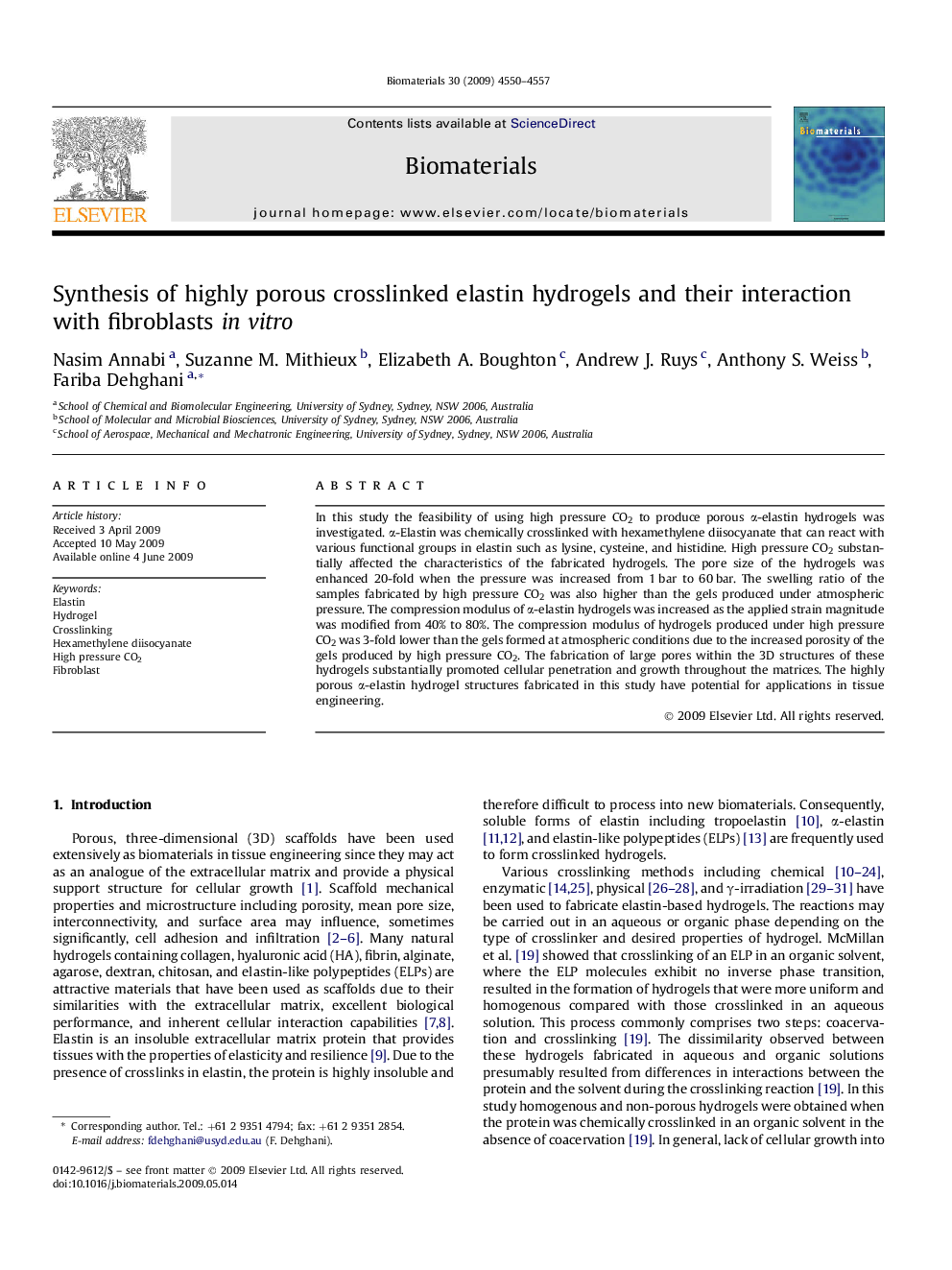| Article ID | Journal | Published Year | Pages | File Type |
|---|---|---|---|---|
| 10230058 | Biomaterials | 2009 | 8 Pages |
Abstract
In this study the feasibility of using high pressure CO2 to produce porous α-elastin hydrogels was investigated. α-Elastin was chemically crosslinked with hexamethylene diisocyanate that can react with various functional groups in elastin such as lysine, cysteine, and histidine. High pressure CO2 substantially affected the characteristics of the fabricated hydrogels. The pore size of the hydrogels was enhanced 20-fold when the pressure was increased from 1 bar to 60 bar. The swelling ratio of the samples fabricated by high pressure CO2 was also higher than the gels produced under atmospheric pressure. The compression modulus of α-elastin hydrogels was increased as the applied strain magnitude was modified from 40% to 80%. The compression modulus of hydrogels produced under high pressure CO2 was 3-fold lower than the gels formed at atmospheric conditions due to the increased porosity of the gels produced by high pressure CO2. The fabrication of large pores within the 3D structures of these hydrogels substantially promoted cellular penetration and growth throughout the matrices. The highly porous α-elastin hydrogel structures fabricated in this study have potential for applications in tissue engineering.
Related Topics
Physical Sciences and Engineering
Chemical Engineering
Bioengineering
Authors
Nasim Annabi, Suzanne M. Mithieux, Elizabeth A. Boughton, Andrew J. Ruys, Anthony S. Weiss, Fariba Dehghani,
